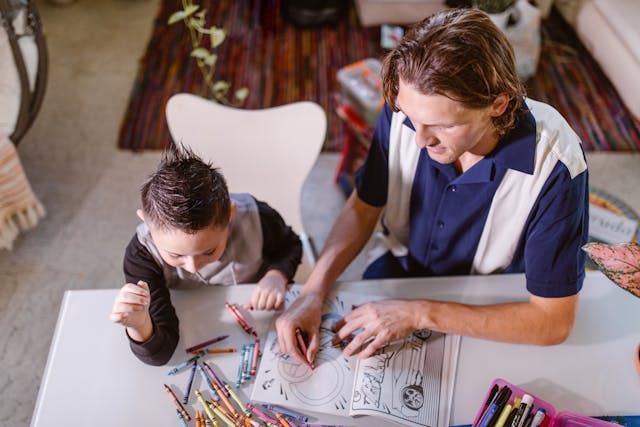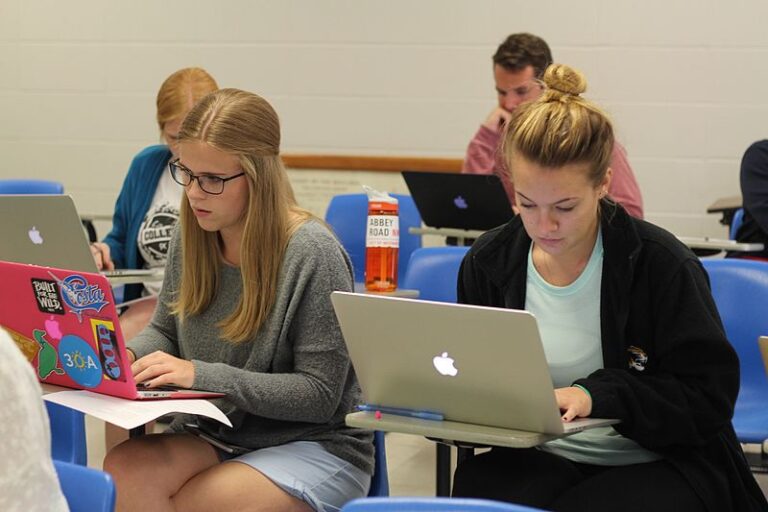Mastering letter sounds is the compass in the reading and literacy voyage. If students can consistently interpret the sounds represented by letters, they can unlock the vast world of words. However, for some students, this early yet crucial step in phonemic awareness is like navigating through murky waters. As educators and parents, it becomes our mission to illuminate and guide them.
Targeting teachers, educators, and parents who are working with students that find letter sounds challenging, this post will be your full metaphoric lighthouse, aiding you to calibrate your strategies and ensure no child is left in the harbor of silence. We will explore a cornucopia of proven tips and learning tools, including worksheets and games — all designed to make the learning process engaging and effective.
Understanding the Struggle
Before we chart the course to mastering letter sounds, it’s essential to understand why some students find this task particularly challenging. The reasons can be as varied as the students themselves. Poor vision, hearing difficulties, language barriers, or a lack of phonemic awareness and vocabulary can be contributing factors. It’s here that the role of the educator transforms into that of a detective, keenly observing and assessing the root cause. Once the challenge is illuminated, the path to overcoming it becomes clearer.
Identifying whether a student needs a more comprehensive phonics instruction or merely a boost in a particular area sets the stage for a customized approach to teaching letter sounds.
The Foundation: Phonemic Awareness
Letter sound mastery begins with a robust foundation in phonemic awareness. For struggling students, starting with the basic understanding of individual sounds and how they are represented by letters is key. Here are some activities that can aid in developing phonemic awareness:
Sound Segmentation
Ask students to break words into individual sounds and emphasize that each sound is represented by a letter. Use simple, monosyllabic words for beginners and graduate towards more complex ones as their understanding progresses.
Sound Matching
Encourage students to match a sound you say to its corresponding letter, either through visuals or manipulatives. This can be an interactive and fun way to reinforce the connection between sound and symbol.
Rhyming Games
Engage in games that revolve around finding rhyming words, which highlights similar sound patterns. They enhance not only awareness of sound similarities but also the ability to identify common sounds and matching letters to these sounds.
Making the Abstract Concrete
Letter sounds are abstract concepts. Turning them into tangible and visual elements can make them more approachable for struggling students. The creation of ‘sound cards’ or an alphabet wall is a visible representation of each letter’s sound. Students can associate each letter of the alphabet with a particular sound, turning the abstract into something concrete.
Sound Cards
Create or purchase flashcards with letters on one side and corresponding sounds on the reverse. These can be used in a ‘show and tell’ manner, where students can physically see the letters and their sounds presented together.
Alphabet Wall
A dedicated wall space can serve as an evolving repository of sounds. Each time a new sound is introduced, the corresponding letter can be added to the wall, accompanied by memorable visuals.
Tailor-Made Techniques
Not all learners are meant to travel the same path. Some may excel with kinetic learning, while others prefer visual aids. Here are techniques tailored to different learning styles:
Kinesthetic Learners
For students who learn best through movement, try phonics dances or letter sound movement games. Dancing out the sounds can make a strong kinesthetic and mental connection.
Visual Learners
Utilize videos, charts, and picture cards to appeal to the visual learner. Tools like an alphabet chart with corresponding images can help these students associate sounds with visual stimuli.
Auditory Learners
Reading books with strong phonetic patterns and sounds out loud can reinforce learning for auditory learners.
Leveraging Technology

In this technologically advanced age, digital tools can be powerful allies in the quest to teach letter sounds effectively. There’s an array of resources online, from interactive websites to educational apps, that can add variety and engagement to the learning process.
E-Learning Platforms
Explore e-learning platforms that offer interactive exercises specifically designed to improve phonemic awareness and letter sound recognition. They often come with the added benefit of tracking progress and tailoring subsequent lessons accordingly.
Educational Apps
There are numerous apps available that transform the teaching of letter sounds into fun and accessible games. Whether it’s matching sounds to letters, listening to a narrator, or turning sound recognition into a puzzle, these apps can be highly motivating for students.
Encouragement Through Storytelling
The power of storytelling in learning is well-documented. For students who struggle with letter sounds, weaving a narrative around letters can prove beneficial.
Letter Adventures
Develop a story that puts letters on a quest for their sounds. It can create a narrative thread that links sounds and symbols in a memorable way.
Personalized Learning
Encourage students to make their stories, with each letter or sound being a character. This personal narrative can make the learning experience more individualized and meaningful.
Encouraging Practice
Repetitive practice can solidify learning, especially for those who find letter sounds challenging. It’s essential to make this practice enjoyable and not just a series of rote exercises.
Workbooks and Worksheets
Provide a variety of worksheets and workbooks that offer practice through coloring, writing, and simple puzzles. This can keep the learning process fresh and enjoyable.
Games and Activities
Turn routine practice into a game. Bingo, memory, and fishing for letters can all reinforce letter sounds in an engaging way.
Assessing Progress
Continuous assessment is vital. It informs the educator of the effectiveness of the intervention and helps in tailoring the approach.
One-on-One Evaluations
Regular one-on-one assessments can help identify gaps and progress. These need not be formal; informal evaluations can be just as effective in gauging understanding.
Observing Engagement
Watch for participation and excitement during lessons and activities. An engaged student is more likely to be absorbing and retaining the material.
Collaborative Effort
Teaching letter sounds is a collaborative effort. It requires the support and understanding of parents, colleagues, and supporting professionals. Communicate the strategies employed and share successes and challenges.
Parental Involvement
Involve parents by providing tools and strategies for reinforcing letter sounds at home. Simple games and activities that can fit within a family’s daily routine can be particularly effective.
Professional Collaboration
Discussing students’ progress with colleagues or specialists can provide fresh insights and methodologies.
Celebrating Milestones
Every small step forward is a triumph when a student is overcoming a challenge. Celebrate these milestones, be they the sounding out of a simple word or the mastering of the whole alphabet.
Praise Effort
Praise the effort and hard work behind the student’s progress. This encourages a positive attitude towards learning and can boost confidence.
Milestone Markers
Consider creating a recognition system, be it a sticker chart or a milestone certificate, for every new sound learned or each step forward in the phonemic awareness journey.
Teaching letter sounds to struggling students is both an art and a science. It requires creativity, adaptability, and patience. By providing a structured yet personalized approach, using an array of teaching tools, and fostering a supportive environment, we can lead even the most hesitant readers into the warm and welcoming arms of literacy. Each student we guide through this process is not just learning letter sounds; they are learning that they can overcome obstacles and succeed. It’s a transformative gift we get to bestow, and one that lasts a lifetime.
What is the best way to teach letter sounds?
The best way to teach letter sounds is to incorporate a multifaceted approach that caters to various learning styles and incorporates technology, storytelling, interactive play, and regular assessment. By providing a myriad of engaging tools and methods such as e-learning platforms and educational apps, along with physical materials like workbooks and games, educators can address the unique needs of individual learners. Emphasizing practice through enjoyable activities, continuous progress monitoring, and the power of positive reinforcement helps to build a strong foundation in phonemic awareness. Furthermore, fostering a collaborative environment involving teachers, parents, and professionals ensures a supportive learning network. Celebrating each milestone along the way instills a sense of achievement and motivation in students, shaping a journey to literacy that is both effective and rewarding.
Innovations in Phonics Instruction
While traditional methods have their place, unique insights can often provide breakthroughs for struggling students learning letter sounds. One such insight is the potential for music and rhythmic patterns to significantly aid in phonics instruction. The inherent musicality in language can be harnessed by turning letter sounds and phonemic exercises into songs or chants that capture the essence of the sounds.
Another innovative approach is the use of multisensory activities where students not only hear and see the letter sounds but also physically interact with them, for example through letter-sound obstacle courses or sculpting letters out of clay while vocalizing the sounds. Lastly, leveraging the benefits of peer teaching can be particularly potent. Assigning buddy reading sessions where a student proficient in letter sounds assists a struggling peer combines the power of social learning with reading practice. These unique methods can complement core instructional practices and offer new, engaging ways to master phonics.


















+ There are no comments
Add yours